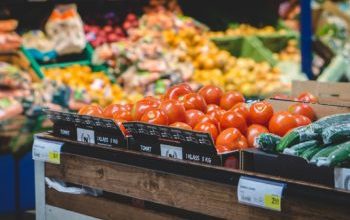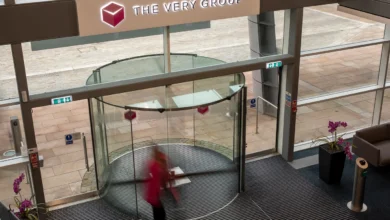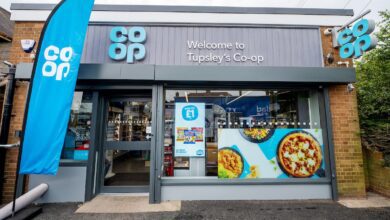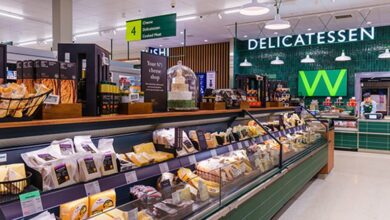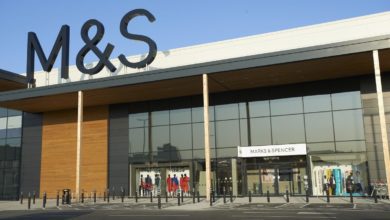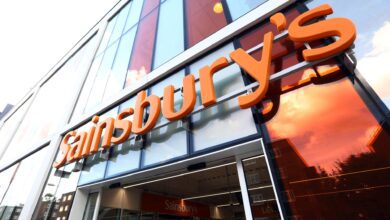What can retailers learn from grocery stores?
Self-checkouts and walk-out technologies have quickly become a regular occurrence in grocery stores nationwide. Meanwhile, retailers still struggle to keep up with technological advancements in the industry. Retail Sector spoke to Geoff Lloyd, director of retail at NTT Data UK&I, about the importance of a frictionless shopping experience for both customers and retailers

Register to get 1 free article
Reveal the article below by registering for our email newsletter.
Want unlimited access? View Plans
Already have an account? Sign in
The KPMG consumer pulse survey released recently says that 61% of people will have to reduce non-essential spending, do you agree?
We’re finding that customers are definitely more selective about their purchases, obviously because of a lack of available spare funds, particularly when it comes to retail fashion, clothing and footwear. We know that people are looking to find the best possible price, considering the economic situation. They’re looking at alternative ways and maybe not always buying new as well. So there are different retail trends going on for sure and I think it’s just generally going to make it tougher for the retailers to win.
It’s fairly normal for us to see self checkouts in a grocery store right now but it’s not so normal for shops. Why do you think the process going towards a frictionless experience has been slower for retailers rather than grocery stores?
I think to begin with, it was easier to do that for grocery stores. The idea of putting a basket through a checkout yourself at a supermarket is pretty self-explanatory. But now I think a lot of retailers are looking at what the supermarkets are doing and trying to understand how the customers are adopting it. And it’s quite interesting because with customers returning to stores post pandemic, we found a similar sort of percentage (about 60%) who are keen to have the option to self checkout. So I think when you combine both seeing what happened with the grocery retailers and seeing customers’ preferences there is definitely a need and a desire to give customers those options when they’re checking out, which is why we’re now seeing lots of high street retailers putting those options in place.
How would a frictionless experience affect retail staff?
It’s interesting that retailers do still have to staff the shops and be there because people run into problems for sure. Technology doesn’t always work. But also particularly when it comes to retail shopping, there is still that sort of customer engagement and contact with the customer that people like, so even if it’s just a chat while you’re shopping, we find that you can’t just put self checkouts and sort of leave it to do its own thing. You do need to give the option to customers if they want to choose it, so staff could potentially be reduced to a degree, but not cut out entirely.
What would the impact be for consumers and for the retailers? What can retailers learn from grocery stores that have already implemented these technologies?
There are going to be efficiencies. If you think about RFID it is one that we’ve been talking about quite a lot recently and it has been around for years. It was an exciting technology at the time, but then a lot of retailers who were focusing on it more through the supply chain initially found that it was actually quite expensive to implement it. But now the advances in technology have driven down the cost of such things. And now RFID is quite a key element within that sort of self checkout process. You can link it to the security and without even having to scan it. So if you go into certain stores, you just drop your products into a basket and it will scan just by reading the RFID.
Computer vision is probably another good example. A lot of the development of that technology was done working hand in hand with the grocery retailers. Using a set of cameras to see what was happening at the checkout to make sure the right things were being scanned or declared was a good thing for retailers, from a security point of view. And now that computer vision is then enhanced to look out for certain situations that could be a threat to other customers. And I think all of that learning from the grocery stores is absolutely now being used and appreciated by retailers.
What would the main challenges for retailers be?
A lot of the retailers we work with want to make sure that that transition to digital is a seamless and well understood journey. Customers definitely have an expectation in terms of how that journey is going to flow for them. I think it’s fair to say they have a fairly high expectation because they want their shopping experience to be quicker by using technology and obviously if the implementations don’t work, which could happen, they get frustrated. So I think the challenge for retailers is to focus on bringing it all together, understanding their customer and the type of journey they want, and then being able to stitch everything together.
Is it necessary for retailers to adopt these measures, knowing that part of the population still willingly goes out and shops even without these technological implementations?
I don’t think there are many retailers who are having conversations saying that we shouldn’t really be giving the customers the choice of using self-checkouts or other technologies. And I’m quite traditional in terms of how I like to shop but I don’t think that’s going to happen if I’m honest. And I believe those retailers that think that they probably could stick with a more traditional way are going to suffer more in the long term.
Considering the current economic challenges, what other advice would you give to retailers to drive profits?
There’s lots. We help retailers from that ‘ship all the way to the shop’ saying, so from sourcing and manufacturing to moving the stocks and selling them. What we’re focused on at the moment is around the smart supply chain, so helping retailers to optimise it and improve it. Then there’s also quite a lot around what we call ‘retailment’, which is retail/entertainment and I think that plays a big role in the engagement with the customer. Then there’s personalisation and how you keep the customer interested in your products. And lastly, the omnichannel model, so having the ability to seamlessly move from digital into the store and back again. I think those are the four key areas that retailers should focus on.


